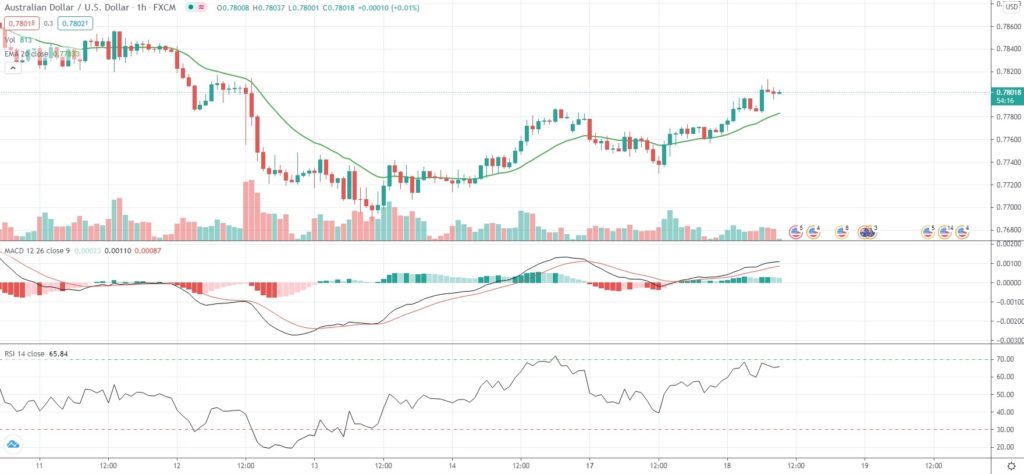AUD/USD rose over 0.5% on Tuesday due to a weaker US Dollar and after the RBA Minutes, released earlier in the day, pointed to rapid economic recovery. Investors were also looking for more clues over inflation and possible tightening of monetary policies.
Market players’ focus has been set on any new pieces of data that could help them assess if central banks would begin scaling back some of their emergency stimulus measures, introduced last year to mitigate a hit on economies from the pandemic.
The Minutes from the Reserve Bank of Australia’s policy meeting in May revealed a slight upward revision of the bank’s inflation forecast. However, policy makers are still expecting a gradual increase in Australia’s inflation rate. In the bank’s baseline scenario, inflation is expected to rise from 1.5% over 2021 to near 2% by mid-2023.
“Headline inflation was expected to spike above 3 per cent over the year to June 2021, partly as the effect of COVID-19-related one-off price changes dropped out of the calculation, before declining back below 2 per cent over the remainder of the forecast period,” the document stated.
The Minutes also showed the economy was making a transition from recovery to expansion earlier and with more momentum than previously expected. The RBA has revised up its GDP growth forecasts for this year and the next, while now expecting a 4.75% growth in 2021 and a 3.5% growth in 2022.
Still, monetary conditions in Australia are likely to remain highly accommodative until at least 2024, the Minutes stated.
Meanwhile, a number of Federal Reserve officials are scheduled to make speeches this week, while the central bank will release the minutes from its April policy meeting on Wednesday.
Yesterday the Fed President for Dallas Robert Kaplan once again stressed on the view that interest rates would probably remain at current levels until next year. This prompted investors to further cut their bets that inflation could urge the Federal Reserve to taper sooner than expected.
“Markets and commentators alike are fixated on inflation, as signs suggest it is coming and will be anything but transitory,” Kristiaan Rehder, fund manager at Kardinia Capital, was quoted as saying by Reuters.
“Most central banks – including the Reserve Bank of Australia – are of the view that any up-tick in inflation will only be temporary. The bond market, however, has already begun to price in an increase in inflation.”
As of 9:04 GMT on Tuesday AUD/USD was gaining 0.54% to trade at 0.7803, while moving within a daily range of 0.7757-0.7814. Last week the currency pair climbed as high as 0.7891, or its strongest level since February 25th (0.8007). The major pair has gained 1.20% so far in May, following another 1.53% surge in April.
Bond Yield Spread
The spread between 2-year Australian and 2-year US bond yields, which reflects the flow of funds in a short term, equaled -7.11 basis points (-0.0711%) as of 8:15 GMT on Tuesday, down from -6.5 basis points on May 17th.
Daily Pivot Levels (traditional method of calculation)
Central Pivot – 0.7759
R1 – 0.7787
R2 – 0.7812
R3 – 0.7840
R4 – 0.7868
S1 – 0.7733
S2 – 0.7705
S3 – 0.7680
S4 – 0.7655






